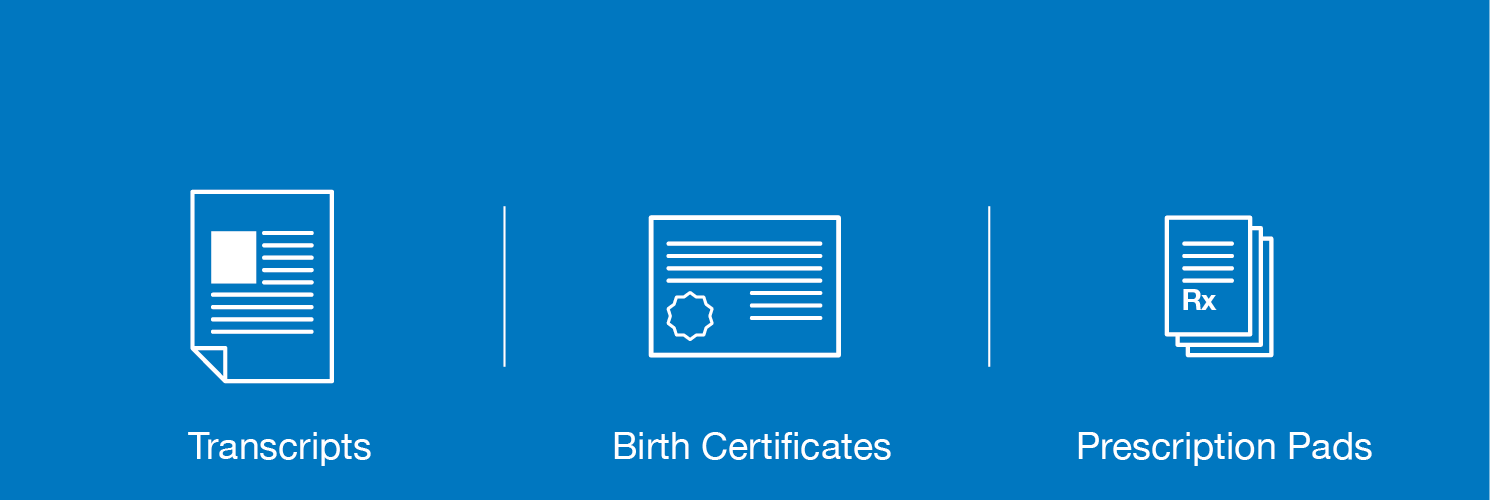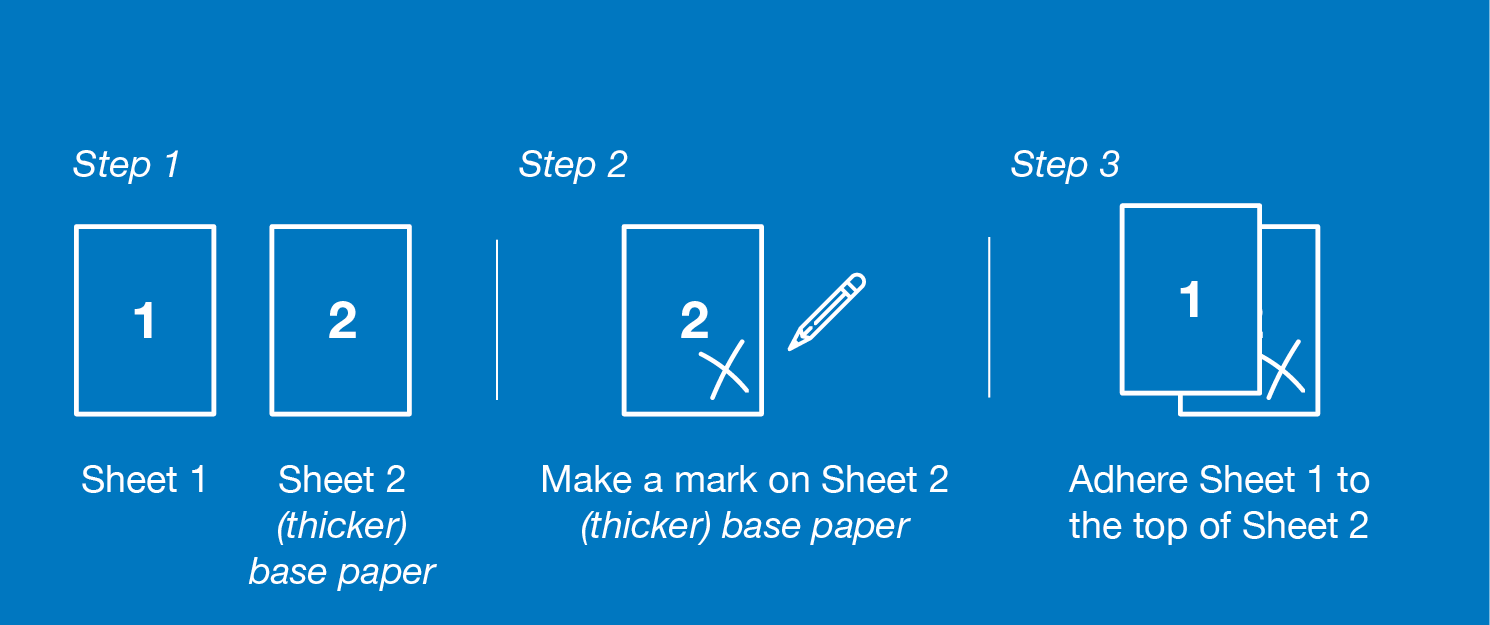Now, more than ever, it’s important that your documents stay secure. Unlike digital files, you can’t encrypt paper documents. But you can help prevent fraud by using tamper-proof security paper. Learn more about security paper and how it can work for you.
What is security paper?
Sometimes known as “safety paper,” security paper has “built-in” features to indicate whether a document has been altered or tampered with. Security paper can be used for printing documents such as transcripts, birth certificates, and medical prescription pads to discourage counterfeiters.
The Intelligence Reform and Terrorism Prevention Act of 2004 required that all 50 US states must issue birth certificates on security paper to prevent these documents from being produced for fraudulent purposes.

When to use security paper:
How does security paper work?
There are a variety of ways that security paper can show that a document has been tampered with. Depending on the construction of the paper, it can include one or several security features that serve as an alert when a person tries to alter or forge an original document. Some of these security features can include:
- Watermarks
- Patterns printed within the paper. These patterns make attempts to erase information visible.
- Dithered patterns that can be seen if someone attempts to copy a document
- Phosphorescent fibers that are visible in daylight or under ultraviolet light
- Metallic threads woven into the paper
- Holographic images
- Chemical treatment to indicate tampering
You can also print your own security paper by using Photoshop or other graphic design software to create a pattern on the page when printing your own documents.

Make your own security paper:
Is there any special procedure for security paper disposal?
There is no specific process for destroying security paper. You can dispose of documents on secure paper by using a paper shredder or traditional means of paper disposal.
How can I purchase security paper?
Anyone can buy security paper. Businesses can purchase security paper to ensure that none of the documents you produce can be counterfeited.

